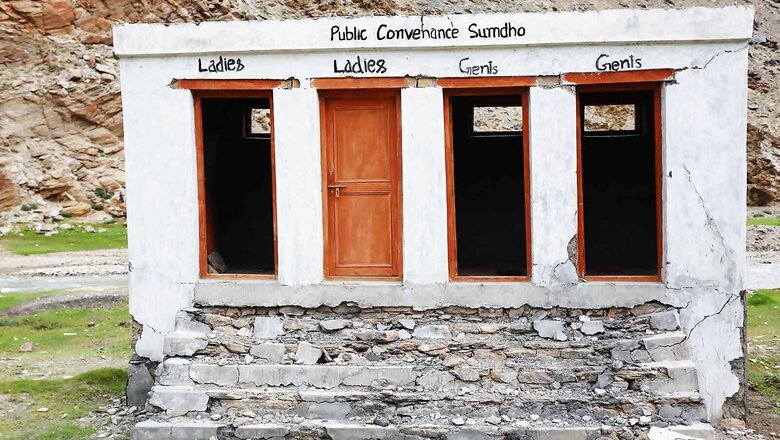
views
Everyone is affected by the lack of adequate sanitation facilities, with marginalised sections like women, girls and transgender people more vulnerable to the lack of access to water and sanitation. The availability of toilets has much more significant implications for these vulnerable sections, and gender inclusivity is key to the success of sanitation outcomes. Women, girls, and transgender people have different needs when it comes to toilets as compared to men. There is also a greater need for privacy and safety while using toilets, specifically public toilets. Lack of access to toilets often makes women and transgender people more vulnerable to sexual violence.
Washrooms with facilities for managing periods and maintaining menstrual hygiene could mean a lot for working women and school-going girls. Toilets designed to meet the specific needs of women and girls will not only reduce health risks, but also empower them. Separate toilets for girls with menstrual hygiene standards at schools, for instance, can reduce the dropout rate among girls and ensure girls continue their education even after reaching puberty. For non-binary and transgender people, a separate toilet could mean a safe space, a mark of a society that includes them.
In India, inclusivity in sanitation practices, particularly the construction of public toilets, should consider the needs of marginalised groups. Unequal access to safe water and sanitation across the country has led to women and girls suffering. Such conditions get in the way of women’s education, economic activities, and socio-cultural involvement. The transgender community, too, often faces issues when it comes to accessing public toilets. There is inadequate infrastructure and social stigma surrounding their choice of washroom. Moreover, non-binary people are often forced to use one of the two gendered washrooms in public spaces, something that does not align with their self-expression.
Gender-focused sanitation programmes can do wonders for women, girls, and transgender people. Under the Swachh Bharat Mission (Grameen), a significant progress has been made in terms of providing women access to toilets, with the construction of over 11 crore household toilets in rural India. Under the Union Education Ministry’s Samagra Shiksha initiatives, there is a provision for gender-segregated toilets in all schools. According to government data, 97.45 percent of government-run schools have gender-segregated toilets. In many states, pink toilets have been built under the Swachh Bharat Mission (Grameen) to cater to the specific needs of women. Pink toilets are equipped with adequate water supply, lighting, and menstrual hygiene requirements like an incinerator for the safe disposal of sanitary pads. Delhi’s first toilet for the third gender was inaugurated as recently as 2021. In Shajapur, Madhya Pradesh, toilets exclusively for transgenders have also been constructed.
However, there is a huge gap when it comes to meeting the safe sanitation needs of women, girls, and the transgender community, especially in public spaces. In order to achieve sustainable sanitation, the voices of all sections of society, no matter how marginalised or numerically small, must be considered.
Mission Swachhta Aur Paani, a News18 and Harpic India initiative, advocates the availability and usage of clean water and safe sanitation for all. Let’s all come together and join hands for Mission Swachhta Aur Paani – Mil Kar Lein Ye Zimmedari to ensure sustainable and inclusive sanitation. A grand Telethon will bring together government representatives, celebrities, artists, change makers, policy experts, and youth icons to celebrate the cause on the occasion of World Toilet Day on November 19.
Watch the Telethon LIVE on November 19, 12 pm onwards at: Mission Swachhta Aur Paani
Read all the Latest News here

















Comments
0 comment